 [At an indoor photographica yard sale that followed the RIT-sponsored conference in April of this year, I came across a copy of Tom Dugan’s 1979 book Photography Between Covers. Consisting of interviews with photographers of the period heavily involved in producing photography books, as well as people otherwise involved with them (publisher David Godine, printer Sid Rapoport), it includes a conversation with me that Dugan taped in February 1978 and transcribed.
[At an indoor photographica yard sale that followed the RIT-sponsored conference in April of this year, I came across a copy of Tom Dugan’s 1979 book Photography Between Covers. Consisting of interviews with photographers of the period heavily involved in producing photography books, as well as people otherwise involved with them (publisher David Godine, printer Sid Rapoport), it includes a conversation with me that Dugan taped in February 1978 and transcribed.
Light Impressions, the still-active Rochester-based firm that specializes in archival materials for photography, for a time got deeply involved in the marketing and distribution (and, to a lesser extent, the publishing) of photo books, issuing Dugan’s unique volume under its imprint. The copy I found — ex-library, with the usual markings, missing its cover, but otherwise intact — cost only a few dollars, so, with my own copy presently in storage, I snagged it. Through the miracles of computerization I scanned the pages of that interview, put them through an OCR program, and ended up with the digitized version whose first section appears below.
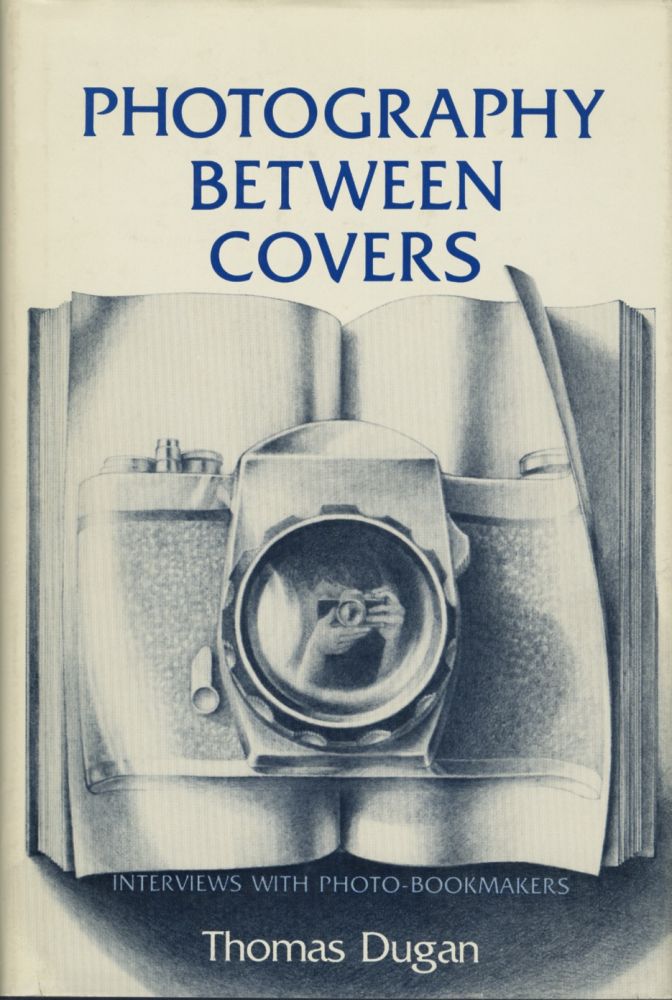 Various factors, including the emergence of print-on-demand (POD) technologies and the ebook format, have already transformed photo-book publishing in radical ways, and promise to do so even more in the near future. (See Frank Cost’s recent Guest Post on this subject.) So this dialogue qualifies as a period piece, a time capsule — like Dugan’s entire book, which I recommend highly — some of whose premises, inevitably, would come to seem quaintly archaic thirty years later.
Various factors, including the emergence of print-on-demand (POD) technologies and the ebook format, have already transformed photo-book publishing in radical ways, and promise to do so even more in the near future. (See Frank Cost’s recent Guest Post on this subject.) So this dialogue qualifies as a period piece, a time capsule — like Dugan’s entire book, which I recommend highly — some of whose premises, inevitably, would come to seem quaintly archaic thirty years later.
Yet the underlying assumptions about edition sizing, production values, pricing, marketing strategies and such seem to me to still hold, with some adjustments for inflation. And the paucity of photo-book reviewers, along with the limited platforms for such commentary, that I bemoaned then have only gotten even worse over the intervening decades.
In any case, here’s the interview as published, to which I’ve added a few notes and made just a few minor grammatical and punctuation corrections. Part 2 appears below; click here for part 1. The succeeding two parts will follow shortly. — A.D.C.]
•
Tom Dugan: Interview with A. D. Coleman, February 14, 1978 (b)
TD: Why do you think that someone like [New York Times art critic] Hilton Kramer, who fairly regularly reviews photography exhibitions, doesn’t regularly review books?
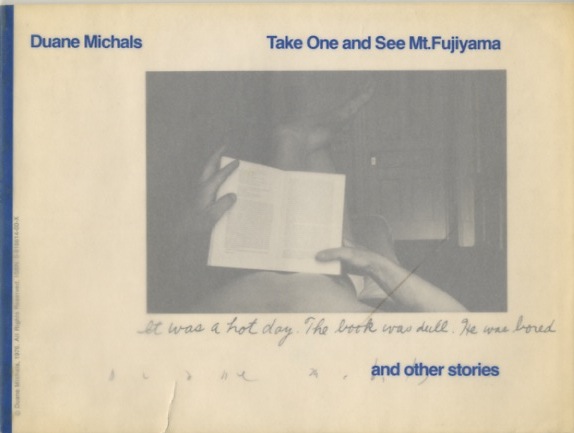 ADC: I don’t think most reviewers take them seriously unless it’s a retrospective monograph where they can approach a summing up of someone’s career. They’re still involved in dealing with photography in terms of original prints, rather than as a means of communicating photographically. Duane Michals’s work does not need original prints as a form. He could communicate just as effectively through books, in terms of what he’s saying now. I think that’s true of Ralph Gibson, and a whole lot of other people. That hasn’t been recognized by a lot of critics, including a lot of photography critics, who are very much tied still, in one way or another, to the original print.
ADC: I don’t think most reviewers take them seriously unless it’s a retrospective monograph where they can approach a summing up of someone’s career. They’re still involved in dealing with photography in terms of original prints, rather than as a means of communicating photographically. Duane Michals’s work does not need original prints as a form. He could communicate just as effectively through books, in terms of what he’s saying now. I think that’s true of Ralph Gibson, and a whole lot of other people. That hasn’t been recognized by a lot of critics, including a lot of photography critics, who are very much tied still, in one way or another, to the original print.
It’s certainly true of Gene Thornton,[1] let’s say. He’s very involved on the one hand with a certain kind of mass-reproduced imagery in his writing, fashion imagery, but he doesn’t seem to be particularly interested in photography books, which are a much more viable way of communicating images and disseminating images, with the exception of images which rely very heavily on the experiencing of the original print. Most of the critics don’t seem to come to that point of understanding photography books, so they’ll wait for the show.
TD: People now seem to be collecting visual books by such artists as Lynd Ward, Frans Masereel, Rockwell Kent, and others, and yet that audience does not seem to be tapped for photography books.
ADC: I agree with you, and again I go back to what I was saying before: I don’t know the reason. I don’t know why that connection has not been made. It hasn’t been made with the older people involved in visual books who seem to place photography books in a separate category, and it hasn’t been done with the younger group who are very involved with other kinds of visual books, not so much with Lynd Ward, but with Zap comics, let’s say. That’s a kind of visual book which I take very seriously. Once again, they won’t think of it in the same vein. Maybe if there was a tradition in America of the kind of photographically illustrated narrative comic book that you have in Latin American culture … I don’t know if you’ve seen those at all, but they’re a lot of “true romances,” and instead of being drawn cartoon-style, they’ll be acted out with actors and a scenario, and little balloons giving the dialogue, and they’ll be photo narratives.
They’ll be very banal, very clichéd, and the photography will not be particularly interesting, but at least you have people there who are habituated to picking up a photo narrative, a book in essence, even though it’s usually magazine form, and reading through it and responding to it as an experience in photography. We don’t have anything like that in this culture. We do that with literal photojournalistic material to some extent in magazines and so on, but there’s no place where we sit down with a book of photographs for fun.
TD: With the exception of the wedding album or the family album.
ADC: Yeah.
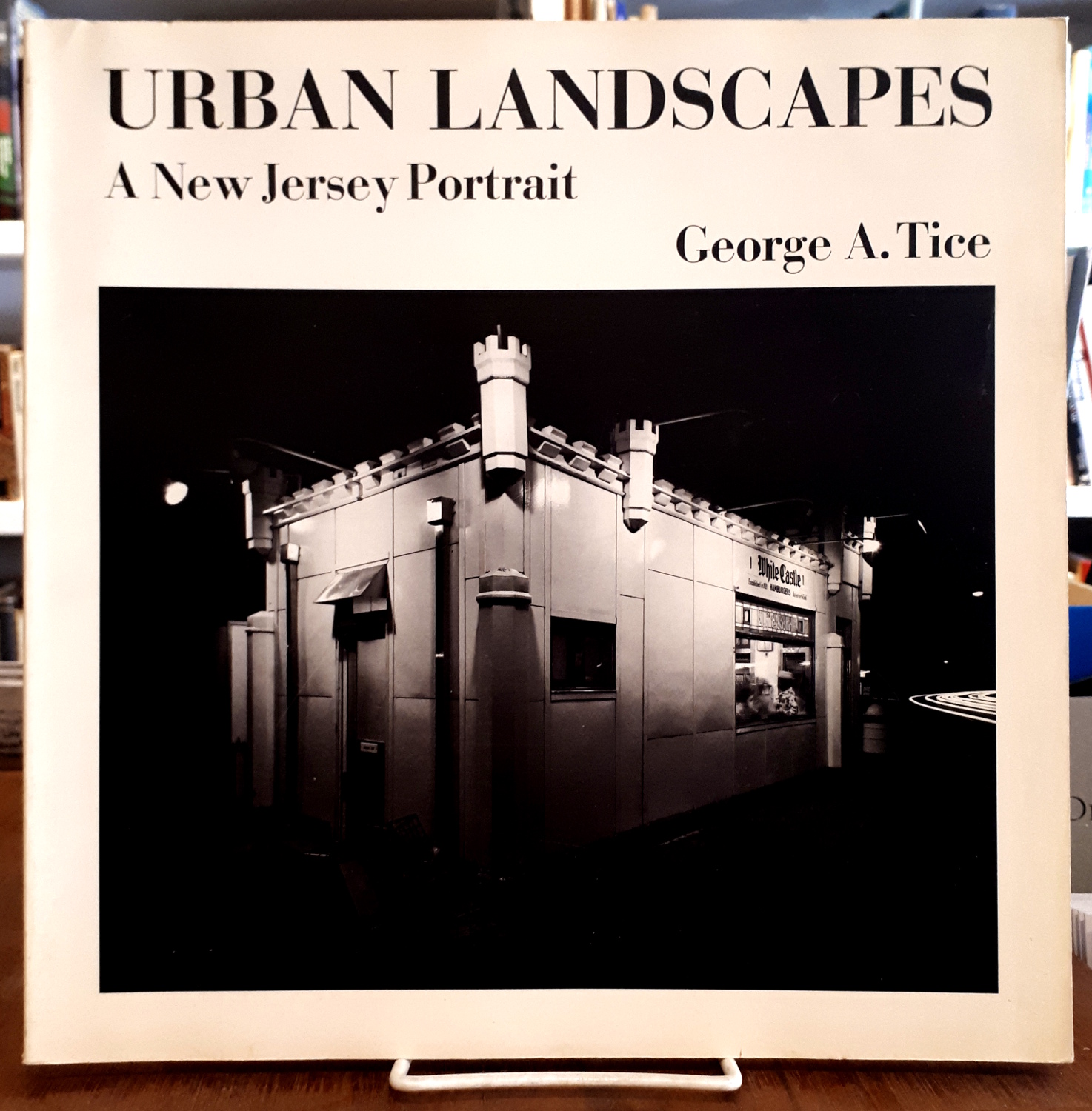 TD: Something that sums up this predicament is: George Tice has had three books published by Rutgers University Press, Paterson, Urban Landscapes and his monograph, George A. Tice 1953-1973; and the monograph is, by far, the best seller among them. People will buy the greatest hits, so to speak, but not the concept books, where the work is in its original form, in effect. I find that a curious way of looking at somebody’s work. If I had a choice between his monograph and Urban Landscapes, for example, I certainly would take the latter because I like to see the way an artist works as opposed to what he thinks are his best images over a period of years.
TD: Something that sums up this predicament is: George Tice has had three books published by Rutgers University Press, Paterson, Urban Landscapes and his monograph, George A. Tice 1953-1973; and the monograph is, by far, the best seller among them. People will buy the greatest hits, so to speak, but not the concept books, where the work is in its original form, in effect. I find that a curious way of looking at somebody’s work. If I had a choice between his monograph and Urban Landscapes, for example, I certainly would take the latter because I like to see the way an artist works as opposed to what he thinks are his best images over a period of years.
ADC: Something here that I think is very important, and I think this is true as much inside photography still as it is among the general public, is that there is an attachment or a fixation on the single image rather than on the extended series, or the sequence or the suite of imagery — again, with the exception of photojournalism, where we’re accustomed to the idea that there might be a body of work done around an idea or theme or situation. In what we think of as art photography or serious photography, there’s the assumption that a book is just a collection of single images. If you talk about the way a book is edited, or sequenced, you’re usually talking about the fact that there’s a round shape on this page and a round shape on that page, and that’s sequencing.
The idea that the book itself, or a sequence of photographs itself, is a thing … You can make a sequence into something that is greater than the sum of its parts, and it’s important to experience images in a particular order, in a particular rhythm, and it’s important to sit with it at a certain tempo, slower than that which we are usually used to approaching photographs maybe, to get into the idea of spending an evening with a book of photographs. Experience them at a slow enough rhythm that you could actually get involved in the space between the images, as well as in the images themselves. This is still a foreign thought, even to most people in photography.
Most photographers flip through books the same way you see people at the racks in the book stores. A one-second flip, thumb through, and they won’t go from beginning to end necessarily. They’ll open at the middle. They won’t assume that there’s a sequence, that it’s a significant sequence. They’ll assume that the single images should communicate a thought.
I think if you’re going to pick up a Duane Michals book and look at it that way, it’s going to seem ridiculous; if you’re going to pick up a Ralph Gibson book and look at it that way, although Ralph’s imagery functions as single imagery also, but that’s not the point of The Somnambulist, that’s not the point of what he was doing in that trilogy, you’re going to miss it. It’s not just that there are ten hot images in Days at Sea. It’s like looking for the hot parts in Lady Chatterley’s Lover; that’s not what you read it for, or it’s not the only thing you read it for.
TD: At least Duane Michals is literal in his sequencing, so you’re kind of forced to follow his concept, but with Ralph Gibson it’s less obvious. The audience is illiterate in terms of reading visual books. That is the major problem in gaining an audience because the audience is not aware of this fact, therefore they’re not curious about visual books in that sense. They don’t think of them as something they have to bring themselves to, and sit, and read and spend an evening, as you said.
ADC: This is a problem because an increasing number of books that come out are, in fact, extended statements. They are intended as unified books and intended to be dealt with as a unit of work, whether things are just thematically joined or they’re more literally sequenced or serial in nature. We’ve got to re-educate ourselves within photography to sitting down with that kind of book, and not the “greatest hits” kind of book which used to be the tradition.
We’ve got to find some kind of way, and I don’t know what it is, of attuning an audience outside of photography to the fact that this is a kind of experience you have when you deal with photographs and books. Some of those books are things you have to spend time with. You have to consider the relationships between the images. You don’t sit there and say, “I like this page and I don’t like that page,” any more than you would do that with a novel. Presumably you either don’t read it at all or you throw it aside after the first couple of pages, or you read it through.
TD: That’s what I see the function of the critic to be — to educate his audience, tell the audience how to read a book of photographs. It appears to be such a simple thing that it’s overlooked. And it’s quite a complex thing. Do you feel the visual book has been exploited or do you think we’re still in the infancy of the movement?
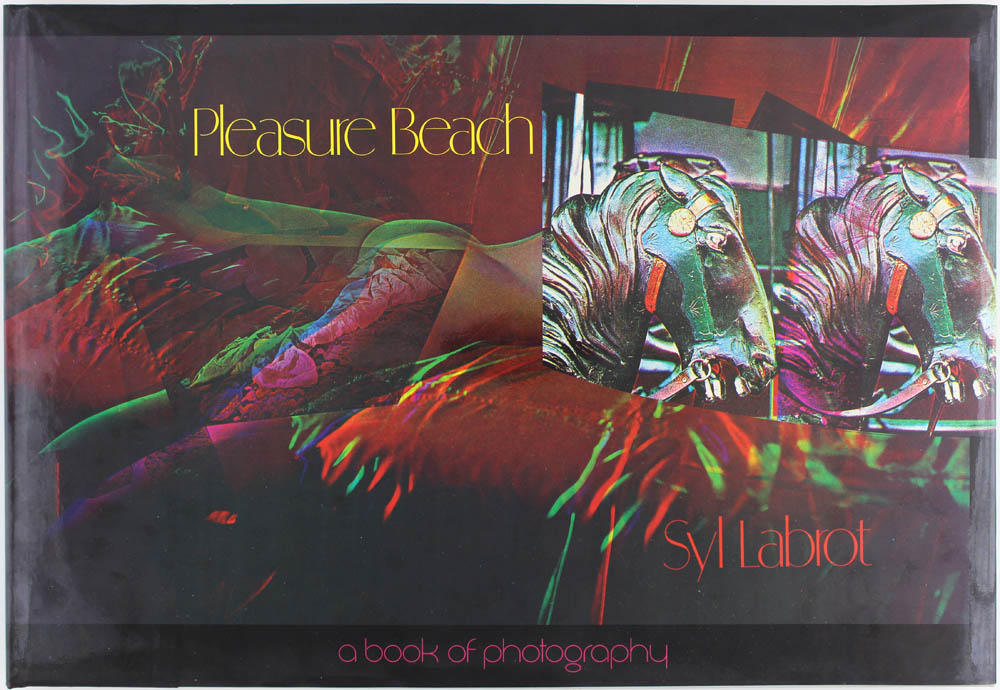 ADC: I don’t think it has been drained dry by any means. There are a lot of books coming out that probably should not be done as expensively or in as large an edition as they’re being done in, or maybe not done at all. But there are an increasing number of very fine books coming out. Books which are suggesting a lot of ways of opening up the medium of the photography book as such through different kinds of experiments in printing — I’m thinking here particularly about Pleasure Beach by Syl Labrot[2] — or in which the photographer is exploring the possibility of making an extended statement of some kind, whether it’s combining words and images in the way that someone like Gaylord Herron does,[3] or whether it’s doing it entirely with images, in the way that Ralph Gibson does in his books. In fact, it’s a much more suitable vehicle for the imagery than original-print form, because original-print form carries with it certain kinds of assumptions which are, in many ways, antithetical to the ideal situation in which you might experience the work, and be most receptive to it.
ADC: I don’t think it has been drained dry by any means. There are a lot of books coming out that probably should not be done as expensively or in as large an edition as they’re being done in, or maybe not done at all. But there are an increasing number of very fine books coming out. Books which are suggesting a lot of ways of opening up the medium of the photography book as such through different kinds of experiments in printing — I’m thinking here particularly about Pleasure Beach by Syl Labrot[2] — or in which the photographer is exploring the possibility of making an extended statement of some kind, whether it’s combining words and images in the way that someone like Gaylord Herron does,[3] or whether it’s doing it entirely with images, in the way that Ralph Gibson does in his books. In fact, it’s a much more suitable vehicle for the imagery than original-print form, because original-print form carries with it certain kinds of assumptions which are, in many ways, antithetical to the ideal situation in which you might experience the work, and be most receptive to it.
Original-print form necessitates museum or gallery display, unless you’re going to assume that someone should be able to buy a sequence of prints, which would be beautiful, but few people can do that. So the best way for someone to experience a sequence, an extended statement, is certainly to be able to experience it over and over again. And to have that kind of repeated experience in any kind of sane way in this culture means you have to have the material accessible to you in your own home.
Very few people can find time to go back, and back, to a gallery or a museum during whatever the short run of the work being there. Even if they go back every day they would only experience that work during that one particular phase of their lives and would not have the option of coming back to it a year later, if the impulse moved them. That’s another thing that having the work in book form gives you.
The lack of intimacy in a one-to-one relationship to the work in the museum and gallery context, where you’re surrounded by other people, has always been a distraction to me and a problem in regard to being able to slow my rhythm down to the rhythm of the work. You’re involved in the rhythm of the public life around you. You’re put in a situation where, in one way or another, you’re going to be somewhat self-conscious in a way that you wouldn’t be at home.
I mean you can’t look at work nude; you can’t look at work just before or after making love; you can’t look at the work just before you go to sleep. There are a lot of contexts the work is excluded from in that original-print form that it’s not excluded from in book form. That’s a very important way to be able to experience work. …
•
[1] Thornton had been my colleague at the New York Times during my time there (1970-74), and was then that paper’s sole photo critic.
[2] Labrot, Syl, Pleasure Beach: A Book of Photography (New York: Eclipse, 1976). A book whose printing techniques, as well as its imagery, involved then-radical experimentation.
[3] Herron had self-published his monograph Vagabond (Tulsa: Penumbra Projects) in 1975.
(Part 1 I 2)
•
 Special offer: If you want me to either continue pursuing a particular subject or give you a break and (for one post) write on a topic — my choice — other than the current main story, make a donation of $50 via the PayPal widget below, indicating your preference in a note accompanying your donation. I’ll credit you as that new post’s sponsor, and link to a website of your choosing. Include a note with your snail-mail address (or email it to me separately) for a free signed copy of my 1995 book Critical Focus!
Special offer: If you want me to either continue pursuing a particular subject or give you a break and (for one post) write on a topic — my choice — other than the current main story, make a donation of $50 via the PayPal widget below, indicating your preference in a note accompanying your donation. I’ll credit you as that new post’s sponsor, and link to a website of your choosing. Include a note with your snail-mail address (or email it to me separately) for a free signed copy of my 1995 book Critical Focus!
 But wait! There’s more! Donate now and I’ll include a copy of The Silent Strength of Liu Xia, the catalog of the 2012-13 touring exhibition of photos by the dissident Chinese photographer, artist, and poet, currently in her sixth year of extralegal house arrest in Beijing. The only publication of her photographic work, it includes all 26 images in the exhibition, plus another 14 from the same series, along with essays by Guy Sorman, Andrew Nathan, and Cui Weiping, professor at the Beijing Film Academy.
But wait! There’s more! Donate now and I’ll include a copy of The Silent Strength of Liu Xia, the catalog of the 2012-13 touring exhibition of photos by the dissident Chinese photographer, artist, and poet, currently in her sixth year of extralegal house arrest in Beijing. The only publication of her photographic work, it includes all 26 images in the exhibition, plus another 14 from the same series, along with essays by Guy Sorman, Andrew Nathan, and Cui Weiping, professor at the Beijing Film Academy.


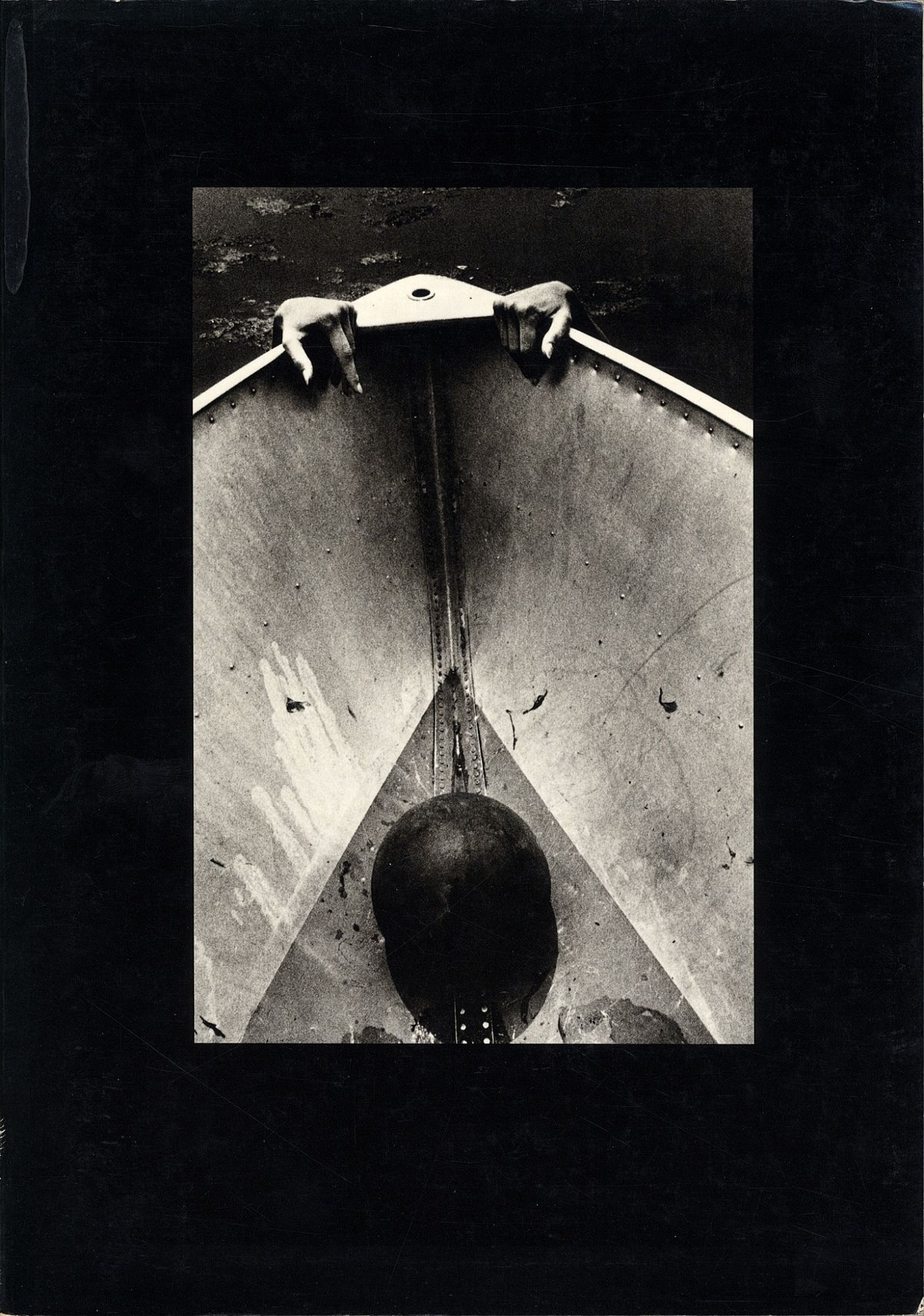





Thank you for resurrecting this great conversation. I’m finding myself anticipating the next installment with the same enthusiasm I once had for some favorite weekly television programming before on-line binge watching swept that experience away.
As one who ran away from film photography screaming in delight when my first digital camera reached three megapixels of resolution, I find myself, nearly twenty years later, surrounded by many students and colleagues who continue to shoot film. While I accept the argument that a large sheet of film in a view camera is still capable of capturing more information in a single exposure than all but the most expensive digital cameras, the common sight of a young person carrying around a 35mm film camera is one of my daily reminders that the world is full of absurdity. When I ask why they are shooting film, they inevitably tell me that film has a certain “look” that digital does not, or something equally absurd. I believe the real reason is that they are desperately clinging to the medieval notion that great value can somehow be conjured alchemically, if only they can figure out a way to infuse the light-sensitive materials with their “genius.” This notion is supported and encouraged by a marketplace where singular sheets of paper are sometimes sold to collectors for thousands of dollars, and some lucky few will go on to win that lottery in the future.
As for me, I love the idea of shooting with my amazing digital camera, and flowing the work without friction or material expense into a book that I can show to anyone in the world online or sell on Amazon the next day.
HI Allan,
Believe it or not, Visual Studies still has copies of Tom Dugan’s book for sale.
Joan